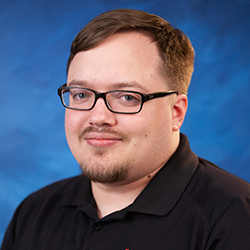Speaker Interview: Chad Walker, Laser Linc

Up next in our interview series is Chad Walker, Product Manager at Laser Linc.
As a Product Manager, focused on the development of a laser-line triangulation-based measurement and defect detection technology. Chad researches common inspection issues in the plastics extrusion industry, typically for applications with mostly-round cross-sections. The team works to develop new methods of surface defect detection and measurement to tackle some of the toughest inspection challenges.
What are the biggest challenges facing the market today, and how can this be overcome?
One of the biggest challenges facing the extrusion industry is quality control. The extrusion process can produce defects in the outer surface that includes bubbles, pits, slits, lumps, protrusions, and more. These defects are occasionally missed in production and make their way to the end user, where they can catastrophically fail while in use. Missing defects in production may result in large expenses to replace the faulty product, reputational damage for the manufacturer, and can even end in someone's death when the defect occurs in life-saving medical devices and other critical applications.
In your opinion, what do you consider to be the greatest development in your industry in the last decade?
When it comes to in-process real-time surface inspection and measurement of a continuous extrusion process, the extrusion industry has been attempting to solve these inspection challenges with vision-based inspection systems. These systems are very challenging to work with and end up not being used. I often find that line operators are tasked with checking surface quality with their hands and eyes. Laser-line triangulation has the potential to be a one-solution fix for the toughest applications. Laser-line triangulation can reproducibly detect the smallest surface defects. Since defect detection settings are dimensional thresholds, it's intuitive to set up and use.
How do you see the sector developing in the next five to ten years?
I expect frame rates in these devices will climb, meaning better inspection coverage at higher line speeds. We currently are seeing limits for frame rates around 10,000 Hz. I hope to see this climb to 50,000 Hz in the near future. Currently, laser-line triangulation technology only works on opaque surfaces. I hope we will see a solution for clear materials in the next couple of years, as this would be a game changer for medical extrusion and some critical aerospace applications.
You will be speaking at the AMI Plastics World Expos in North America, could you give us a preview on what you will be talking about?
My talk is broken into two parts, measurement accuracy and surface defect detection. I will be discussing some little-known facts about the inherent inaccuracies in outer diameter and ovality measurements produced by laser micrometers and vision measurement systems. I will also explain why laser-line triangulation does not suffer from these inaccuracies. In the second half of the discussion, I will show you how laser-line triangulation is able to map the 3D surface topography of an extruded surface. I will provide examples of why 3D analysis is able to give you the best in-process surface inspection.
Chad Walker will be speaking at the AMI Plastics World Expos in North America.
